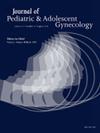1. A Novel Ovarian Reserve Monitoring Algorithm for Patients at Risk of Ovarian Injury from Gonadotoxic Therapy
IF 1.7
4区 医学
Q3 OBSTETRICS & GYNECOLOGY
引用次数: 0
Abstract
Background
Adolescent and young adult cancer survivors are at risk of infertility due to the gonadotoxic effects of treatment. Although ovarian function testing (OFT) is an essential aspect of fertility care, there is currently no standard of care for monitoring reserve after gonadotoxic therapy. At our institution, we measure AMH and FSH at 12-, 18-, and 24-months post-therapy for early detection of DOR (diminished ovarian reserve) and POI (premature ovarian insufficiency) to avoid delays in referral for assisted reproductive technologies (ART). The primary objective of this study is to assess whether a novel ovarian reserve monitoring algorithm enables early detection of DOR and POI after gonadotoxic therapy to improve reproductive outcomes.
Methods
In this IRB-approved observational cohort study at University of Colorado Hospital, we evaluated the algorithm to (1) identify survivors at risk of DOR and POI due to gonadotoxic therapy and (2) minimize time from treatment to ART. Group A (n=106) consisted of a retrospective cohort of survivors who completed therapy between October 1, 2016, and September 31, 2019, with AMH and FSH evaluated at 12, 18, and 24 months post-treatment completion (n=27). Group B (n=418) included survivors who completed cancer therapy after September 31, 2019, assessed prospectively at similar time points (n=64). AMH and FSH values, along with time since treatment, were analyzed to determine if the algorithm enables early detection of DOR before POI. Ovarian status was categorized as normal, diminished, impending POI, or POI. Time from treatment to diagnosis of DOR and POI was compared between the prospective group and historical controls using the log-rank test.
Results
Demographics between groups A and B were similar. OFT within 36 months after completing cancer treatment was performed in only 17.4% (91/524) of patients, and AMH was rarely tested before 2019. At the 24-month follow-up, the prospective group had a higher prevalence of normal ovarian reserve (44.3% [27/61] vs. 17% [4/23], p=0.05) compared to the retrospective group. Time from treatment to diagnosis of DOR or POI was shorter in Group B, although not significantly due to the small sample size (8.2 months in group A [n=19] vs. 6.1 months in group B [n=24], p=0.7).
Conclusions
Results suggests that patients followed under the fertility preservation program since 2019 have received more frequent monitoring and earlier OFT with increased use of AMH testing to detect changes before significant decline. The ovarian reserve monitoring algorithm allows early detection of DOR and POI after gonadotoxic therapy, potentially improving reproductive outcomes.
1. 一种新的卵巢储备监测算法用于卵巢损伤风险患者的促性腺毒素治疗
背景:由于治疗的促性腺毒性作用,青少年和青年癌症幸存者有不孕的风险。虽然卵巢功能测试(OFT)是生育护理的一个重要方面,目前还没有标准的护理监测储备后的促性腺毒素治疗。在我们的机构,我们在治疗后12个月、18个月和24个月测量AMH和FSH,以早期发现DOR(卵巢储备功能减退)和POI(卵巢早衰),以避免延迟转诊辅助生殖技术(ART)。本研究的主要目的是评估一种新的卵巢储备监测算法是否能够在促性腺毒素治疗后早期发现DOR和POI,从而改善生殖结果。在这项由美国科罗拉多大学医院irb批准的观察性队列研究中,我们对该算法进行了评估,以:(1)识别由于促性腺毒素治疗而存在DOR和POI风险的幸存者;(2)最大限度地缩短从治疗到ART的时间。A组(n=106)包括在2016年10月1日至2019年9月31日期间完成治疗的幸存者的回顾性队列,在治疗完成后12、18和24个月评估AMH和FSH (n=27)。B组(n=418)包括2019年9月31日之后完成癌症治疗的幸存者,在相似的时间点进行前瞻性评估(n=64)。分析AMH和FSH值以及治疗后的时间,以确定该算法是否能够在POI之前早期检测到DOR。卵巢状态分为正常、减弱、即将发生POI或POI。使用log-rank检验比较前瞻性组和历史对照组从治疗到诊断DOR和POI的时间。结果A组和B组的人口统计学特征相似。仅17.4%(91/524)的患者在完成癌症治疗后36个月内进行了OFT检查,2019年之前很少检测AMH。随访24个月时,前瞻性组卵巢储备正常率高于回顾性组(44.3% [27/61]vs. 17% [4/23], p=0.05)。B组从治疗到诊断DOR或POI的时间较短,尽管由于样本量小而不明显(A组为8.2个月[n=19], B组为6.1个月[n=24], p=0.7)。结果表明,自2019年以来,在生育保留计划下随访的患者接受了更频繁的监测和更早的OFT,并增加了AMH检测的使用,以在显着下降之前检测变化。卵巢储备监测算法允许在促性腺毒素治疗后早期检测DOR和POI,潜在地改善生殖结果。
本文章由计算机程序翻译,如有差异,请以英文原文为准。
求助全文
约1分钟内获得全文
求助全文
来源期刊
CiteScore
3.90
自引率
11.10%
发文量
251
审稿时长
57 days
期刊介绍:
Journal of Pediatric and Adolescent Gynecology includes all aspects of clinical and basic science research in pediatric and adolescent gynecology. The Journal draws on expertise from a variety of disciplines including pediatrics, obstetrics and gynecology, reproduction and gynecology, reproductive and pediatric endocrinology, genetics, and molecular biology.
The Journal of Pediatric and Adolescent Gynecology features original studies, review articles, book and literature reviews, letters to the editor, and communications in brief. It is an essential resource for the libraries of OB/GYN specialists, as well as pediatricians and primary care physicians.

 求助内容:
求助内容: 应助结果提醒方式:
应助结果提醒方式:


